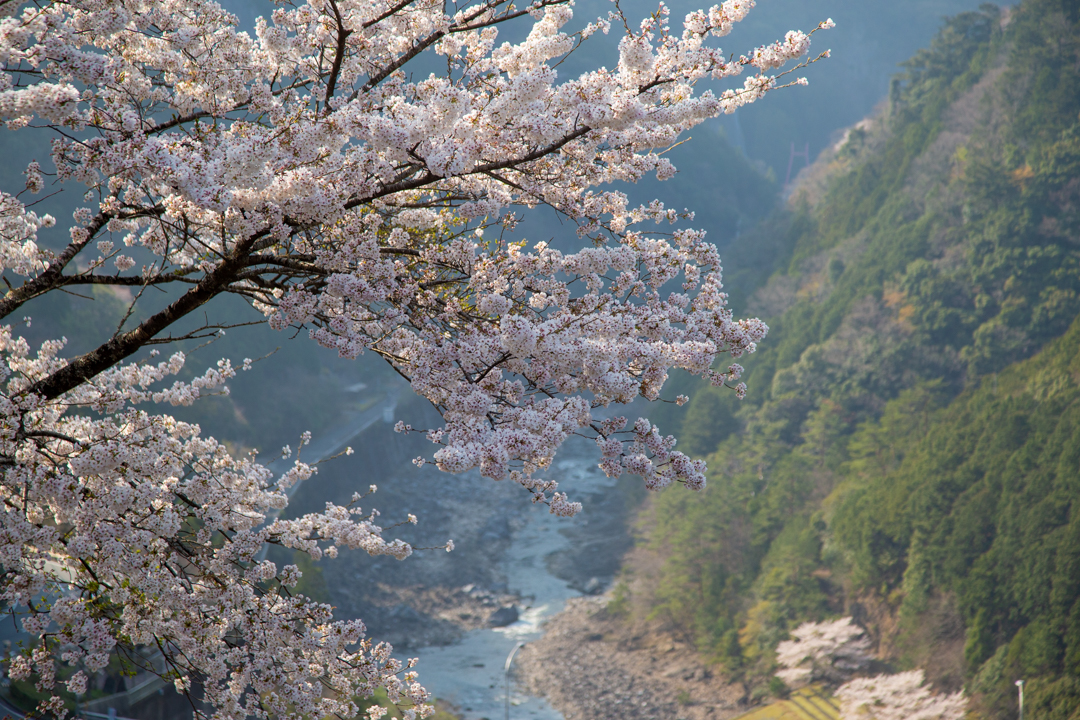おおたき・Otaki

Otaki is located on a bend on the Yoshino River and holds some of the richest cultures and histories in the village. Its connection to Yoshino Ringyo is profound as Otaki was the birthplace of Shozaburo Dogura 庄三郞 土倉 (1840-1917). Dogura is a local legend who is regarded as the godfather of Yoshino forestry. More will be written about Dogura and Yoshino forestry in detail within the Culture and History tab of this website on a later date.

A statue of Dogura stands beside Otaki Post Office where his house once stood. The house was wiped out in the 1959 Isewan Typhopon (伊勢湾台風), which was the strongest and deadliest typhoon to make landfall of Japan in recorded history. Kawakami stood at the epicenter of its destruction and its effects devastated the village and shaped the course of its history more than any event in Kawakami’s history. This topic deserves a page of its own and will be written about in detail in the future under the Culture and History tab of this website.

A series of six signboards are placed around Otaki and Nishigawa to share about Dogura and his role in shaping Yoshino Forestry and life in Kawakami.
On this signboard is a photo from the Yoshino Ringyo Zensho 吉野林業全書, writen by Dogura in 1898.

Otaki’s Ryusenji Temple sits on the hill above the Rt. 169. It is the temple where Dougura’s funeral ceremony was held.

Nearby is the Genryukan Kendo Dojo. The glass in the window panes are so old that the glass has warped due to gravitational effects over the course of decades. Kawakami is home to one of the greatest Kendo swordsmen in all of Japan, Uegaki sensei. More will be written on him in a separate page.

Be sure not to leave Kawakami without trying some of Nara’s famous persimmon leaf sushi, Kakinohazushi (柿の葉寿司). This can be purchased in either the image above or below. Matsumoto auto clinic is located across the street from this, should you have any automobile issues. The owner, Mr. Matsumoto, is very kind and will gladly help you out in a pinch. Takachan Karaoke, also right next door, is one of Kawakami’s best karaoke venues. The owner is quite a character.

By far the most dominant feature of Otaki is the Otaki Dam. It was constructed in the aftermath of the aforementioned Isewan Typhoon disaster. The construction of this dam took decades and was a major point of heated debate amongst local politicians and villagers.
On one side were those who thought it would be better to build the dam for safety reasons and who saw potential for progress in dam construction job growth and in funding and public works projects that the village would receive from the national government in return for constructing the dam. On the other side stood the many whose homes had to be demolished in order for the dam to be constructed and those who felt this would destroy the Yoshino River, Kawakami’s main source of life.
Today, the reservoir behind the dam sits still like a quiet ocean that stretches far to the south through a now concrete-lined riverbed. It is regularly filled with farm fish because local fish are unable to swim beyond where the dam was built. A huge portion of the village moved away after its construction and the question of whether or not the construction was necessary, or whether it was the dam alone that led to the village’s extreme decline in population, remains a painful topic for villagers to this day.
This dam and the upstream Osako dam are featured in a new local specialty, “dam curry.”

